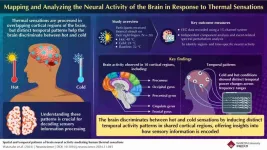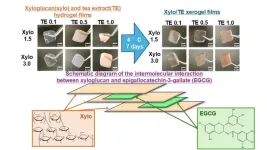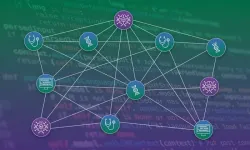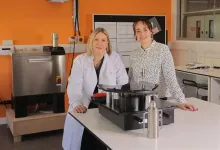(Press-News.org) PULLMAN, Wash. – When it comes to getting people to want to go places, the future is ever more lovely than the past, according to a new Washington State University-led study in the Journal of Hospitality and Tourism Research.
Led by Ruiying Cai, an assistant professor in the Carson College of Business, the study found that forestalgia-focused destination ads—those that emphasize an idealized future—are more effective at enticing travelers to click the purchase button for a vacation than ads based on fond recollections. The research also revealed that forestalgia advertising is particularly effective for getting people to book near-term trips, as imagining upcoming experiences makes travel plans feel more vivid and achievable.
Cai and her team conducted three experimental studies with 665 U.S. travelers, comparing the impact of nostalgia-focused and forestalgia-focused advertising messages on participants’ intentions to visit a destination. Nostalgia-focused ads prompted participants to reflect on past travel memories, while forestalgia-focused ads encouraged them to envision future experiences. Across all three studies, participants were more inclined to choose destinations featured in forestalgia-focused ads.
"We were surprised by how consistent the results were," Cai said. "Even when we carefully reviewed the data, it was clear that travelers responded more favorably to future-focused messages. Forestalgia taps into a natural human tendency to idealize what’s ahead."
While nostalgia has been widely studied and applied in destination marketing, forestalgia, a term introduced in a 2023 product marketing study, remains relatively underexplored, especially when compared to nostalgia. The study’s findings suggest that this future-focused approach describing a yearning for an idealized future holds significant promise for tourism marketing.
One key reason is its simplicity. Nostalgia can evoke bittersweet emotions, as past experiences are often a mix of positive and negative memories. In contrast, forestalgia allows travelers to focus on the possibilities of what is ahead.
"People tend to idealize the future," Cai said. "It’s not weighed down by the complexities of memory, which can include both joy and regret."
The study also explored how temporal distance—the perceived time until a trip— moderated the effectiveness of advertisements. Forestalgia-focused ads were most impactful when promoting trips within the next year.
"When people think about a trip happening soon, they’re more likely to engage in concrete planning," said Cai. "They imagine booking flights, finding accommodations, and planning activities, making the trip feel more achievable and exciting."
The implications for destination marketers are significant. Tourism campaigns often rely on nostalgia to evoke a connection with potential travelers, but this research highlights the untapped potential of forestalgia. Marketers could design campaigns that vividly depict future experiences, emphasizing how a destination could fulfill travelers’ dreams and aspirations. For trips planned in the near term, this strategy may be particularly persuasive.
“When people think about the future, they often idealize it,” said Cai. “It’s about imagining the adventures and memories waiting to be made. That sense of excitement and possibility is something we can all connect with, especially when dreaming about our next trip.”
END
WSU study shows travelers are dreaming forward, not looking back
2025-01-22
ELSE PRESS RELEASES FROM THIS DATE:
Black immigrants attract white residents to neighborhoods
2025-01-22
COLUMBUS, Ohio – Black immigrants moving into a neighborhood can help shift the overall racial and ethnic character of the area, a new study suggests.
A researcher from The Ohio State University found that when Black immigrants move into a majority native-Black neighborhood, there is an increase in the white population moving in while native Black residents move out.
“Blackness can’t be treated as a monolith within the United States today, where there is a growing Black immigrant population,” said Nima Dahir, author of the study and assistant professor of sociology at Ohio State.
“There is a lot of complexity ...
Hot or cold? How the brain deciphers thermal sensations
2025-01-22
When we touch something hot or cold, the temperature is consciously sensed. Previous studies have shown that the cortex, the outermost layer of the brain, is responsible for thermal sensations. However, how the cortex determines whether something is hot or cold is not well understood. Thermal sensitivity is often subjective and individualistic; what is a comfortable temperature for someone might be too hot or too cold for someone else.
In a new study, Professor Kei Nagashima from the Body Temperature and Fluid Laboratory, Faculty of Human Sciences, ...
Green tea-based adhesive films show promise as a novel treatment for oral mucositis
2025-01-22
Green tea shines as a natural powerhouse of antioxidants, with catechins leading the charge among its polyphenols, which protect cells from oxidative stress. These powerful compounds neutralize harmful free radicals generated during cancer treatment. The anti-inflammatory properties of green tea can alleviate oral mucositis, a painful inflammation of the mouth lining often caused by chemotherapy and radiation.
Building on these benefits, researchers at the Tokyo University of Science (TUS), Japan, have explored the potential of tea catechins in developing ...
Single-cell elemental analysis using Inductively Coupled Plasma Mass Spectrometry (ICP-MS)
2025-01-22
Trace metals are crucial for the growth of all living organisms. Understanding the role of these trace metals on the metabolism is essential for maintaining a stable state of the organism. Additionally, human beings are also facing constant exposure to various harmful heavy metals due to various types of pollution. Collectively, these aspects have led to research and development in the field of analytical techniques that can help in identifying the level of these trace metals in our cells.
Inductively coupled ...
BioChatter: making large language models accessible for biomedical research
2025-01-22
Large language models (LLMs) have transformed how many of us work, from supporting content creation and coding to improving search engines. However, the lack of transparency, reproducibility, and customisation of LLMs remains a challenge that restricts their widespread use in biomedical research.
For biomedical researchers, optimising LLMs for a specific research question can be daunting, because it requires programming skills and machine learning expertise. Such barriers have reduced the adoption of LLMs for many research tasks, including data extraction and analysis.
A new publication in Nature Biotechnology introduces BioChatter to help overcome ...
Grass surfaces drastically reduce drone noise making the way for soundless city skies
2025-01-22
The findings, published today in Scientific Reports, show, for the first time, how porous ground treatments can mitigate noise and optimise propellor performance.
Lead author Dr Hasan Kamliya Jawahar from the University of Bristol’s aeroacoustic group managed by Professor Mahdi Azarpeyvand was able to demonstrate that porous ground treatments, can significantly reduce noise by up to 30 dB in low-mid frequencies and enhance thrust and power coefficients compared to solid ground surfaces. This suggests that treating roofs of building, ...
Extent of microfibre pollution from textiles to be explored at new research hub
2025-01-22
A newly established research hub in North East England will explore the extent and environmental impact of microfibre loss from textiles.
Microfibre shedding from clothing during machine washing and drying is well known, with the tiny fibres causing harm to wildlife and the environment when they enter soil, air and waterways.
Located on Northumbria University’s campus in the centre of Newcastle, the Fibre-fragmentation and Environment Research Hub (FibER Hub) is the result of a collaboration between the University and The Microfibre Consortium (TMC) and will extensively test a wide variety ...
Many Roads Lead to… the embryo
2025-01-22
Is there only one optimal configuration an organism can reach during evolution? Is there a single formula that describes the trajectory towards the optimum? And can we ‘derive’ it in a purely theoretical fashion? A team of researchers, including from the Institute of Science and Technology Austria (ISTA), has answers. Their mathematical model forecasts the ideal body plan of a fruit fly’s early embryo, suggesting that evolution might had many optimal options at its disposal.
It is hypothesized that optimization is the secret sauce for many of nature’s fascinating ...
Dining out with San Francisco’s coyotes
2025-01-22
As their traditional dining options dwindle and natural areas give way to restaurants, homes and sidewalks, the coyotes of San Francisco are shifting what they eat.
Scientists from the University of California, Davis, wanted to understand what San Francisco’s coyotes are eating, and how their diet is changed and shaped by the city’s landscape, which can vary from block to block.
Their study, published in the journal Ecosphere, found that the number of restaurants and amount of pavement or “impervious surfaces” within the city heavily influenced what the coyotes ...
What’s the mechanism behind behavioral side effects of popular weight loss drugs?
2025-01-22
Glucagon-like peptide 1 receptor agonists (GLP1RA)—medications for type 2 diabetes and obesity that have recently been making headlines due to a rise in popularity as weight loss agents—have been linked with behavioral side effects. A large population-based analysis in Diabetes, Obesity and Metabolism assessed whether certain genetic variants might help explain these effects.
GLP1RA mimic the GLP-1 hormone in the body that helps control insulin and blood glucose levels and promotes feelings of satiety. GLP-1 ...






